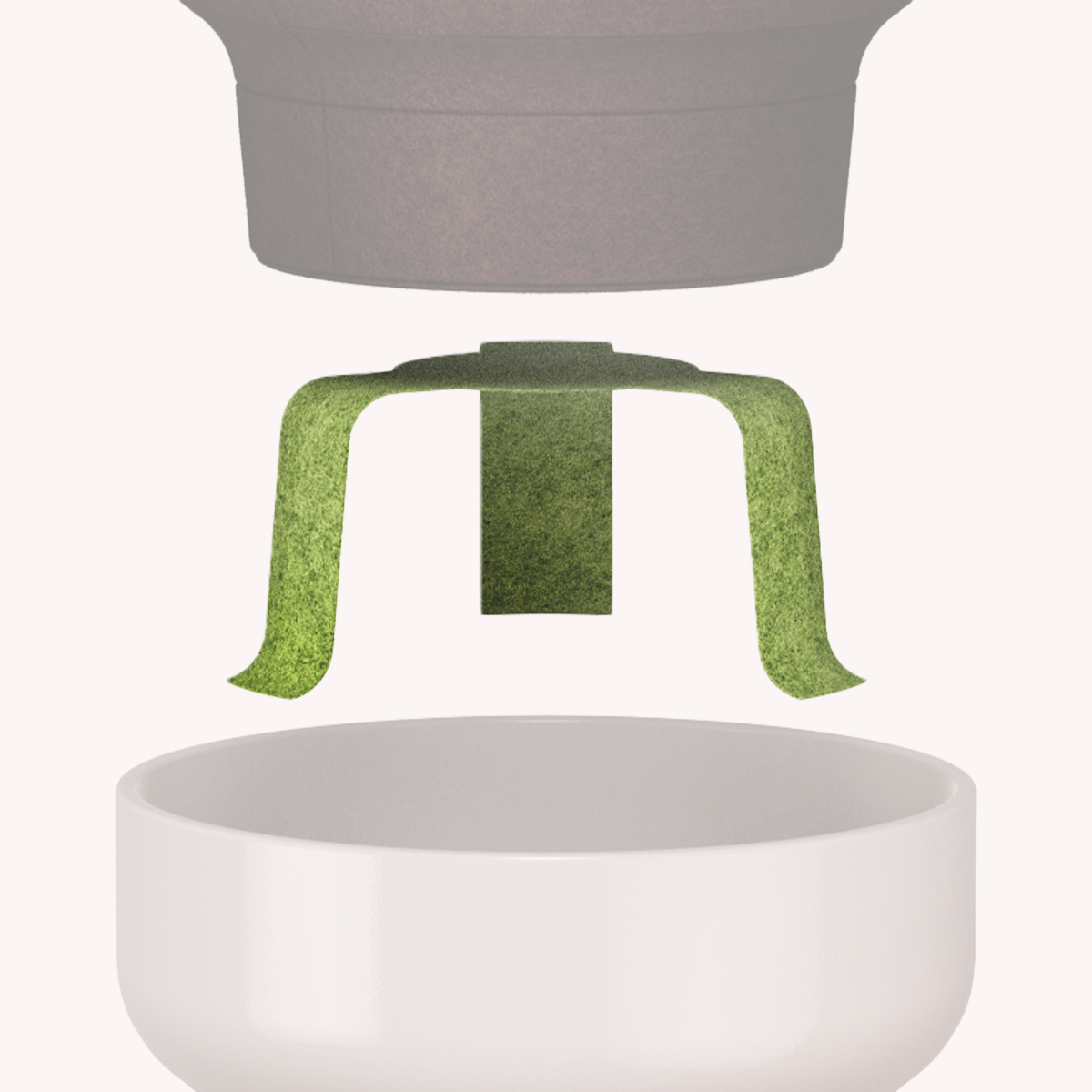

The Science of Self-Watering Planters
Watering our plants is simple — until it’s not. Overwatering can cause root rot, while under-watering causes dehydration. Self-watering planters resolve this problem by providing water to the plants as needed, making for an efficient and low-maintenance way to foster healthy, flourishing greenery.
At Tendril, we have developed high-performance planters that transcend aesthetics. Our self-watering, air-pruning system and optimized soil packs provide conditions for plant health without deviating from the principles of regenerative gardening. But what is the science behind self-watering technology, and why does it impact so deeply?
In this article, we’ll explore the science behind self-watering planters and why they are a game changer in home gardening!
How Do Self-Watering Planters Work?
Self-watering planters work by allowing a reservoir system in the planter to hydrate the plant's roots. This phenomenon — called capillary action — enabled plants to uptake moisture as needed, minimizing over- or underwatering.
The Essential Elements of a Self-Watering Planter
-
Water Reservoir – A man-made storage structure constructed to hold excess water.
-
Wicking System – A system, e.g., a fabric wick or a soil column, that facilitates the upward flow of water to the roots.
-
Overflow Drainage – Stops excessive water accumulation to prevent root rot.
-
Aeration Zone – Promotes root growth by allowing the flow of oxygen.
By ensuring a steady moisture level, this system allows steady plant growth while minimizing the need for frequent watering.
Self-Watering Planters: The Science of Capillary Action
Capillary action is the spontaneous movement of liquids in porous materials against gravity. This law enables plant roots to draw water from the reservoir upwards, maintaining soil moisture at even levels.
Scientific Explanation
As soil particles absorb water, the binding forces between the soil structure and water molecules ensure even moisture distribution. In addition, cohesive forces, which are the forces of attraction between water molecules, aid in the movement of water in the soil column, thus imitating the natural process of plant roots drawing water from the earth.
Supporting Scientific Evidence
Soil capillarity research concludes that highly aggregated soil, with optimal porosity, provides good access to water for plants. A study published in the Journal of Agricultural Water Management discovered that capillary irrigation enhanced water-use efficiency in crops by 30%, hence minimizing total water wastage.
Why Self-Watering Planters Promote Healthier Plants
1. They Prevent Overwatering & Root Rot
Overwatering is one of the most common problems plant owners have. Too much water causes porosity in aeration, causing the roots to lose the required oxygen and promoting molds and root rotting. Self-watering containers only allow uptake of water when needed, allowing roots to be healthy.
Plant Biology research shows that maximum soil aeration reduces plant stress and promotes deep root development.
2. They Imitate Natural Soil Water Conditions
The moisture in nature gradually changes, and there is a steady water supply. The traditional potting methods usually lead to moisture extremes—either excess or deficit.
A self-watering system replicates nature's water cycle, thus preventing plants from water stress or staying in waterlogged situations. Such stability allows for improved nutrient uptake and overall growth.
3. They promote root aeration and reduce soil compaction.
Soil Compaction is a widespread issue in container plants. Soil compaction prevents the movement of oxygen in the soil, starving the roots of oxygen and preventing them from breathing. The air space assists in healthy root development by preventing soil compaction in a self-watering planter.
An article published in Agronomy Research highlights the importance of proper soil aeration in root mass development and nutrient absorption.
4. They also save water and minimize wastage.
Conventional watering also results in runoff, evaporation, and wasted water. Self-watering pots hold the remaining water in the reservoir, with plants taking back what they need.
According to research published by the International Journal of Advanced and Applied Sciences, self-watering systems use 40-50% less water than conventional watering methods.
How Tendril's Self-Watering Planters Advance the Concept Further
1. Biomimicry Technology: We've created self-watering pots at Tendril that include sophisticated biomimicry features
-
Self-watering technology uses a sophisticated wicking system
- Vertical separation of the soil from the water prevents the two from mixing, thus eliminating overwatering
-
Air-pruning to avoid root-bound plants
-
Improved soil packs that contain nutrients support long-term growth.
2. Sustainable Design
-
Composed of environmentally friendly materials that are regenerative gardening compatible
-
Saves plastics from wastage by eliminating the use of single-use plastic pots
3. Designed for Indoor and Outdoor Plants
-
Designed for herbs, vegetables, flowers, and house plants
-
Protects roots against temperature changes
Tendril's planters offer a low-fuss, high-function system that permits plants to flourish while minimizing environmental impact.
How to Use a Self-Watering Planter for Best Results
To make the most of your self-watering planter, apply the following best practices:
Select the appropriate soil
-
Use a well-draining potting medium to allow capillary action.
-
Steer clear of heavy garden soil, as this may hinder excellent wicking.
Top Up the Reservoir Periodically
-
Check water levels every few days to ensure the reservoir is not running low.
-
Utilize filtered or rainwater for the best plant health.
Don't Overfill
-
Have the plant absorb water naturally from the reservoir rather than inundating the system.
-
Ensure the overflow drain is functional to prevent water accumulation.
Track Plant Growth
-
Search for signs of nutrient deficiencies (yellow leaves, stunted growth).
-
Rotate your planter occasionally for even light exposure.
Enhance Your Garden Techniques with Tendril.
Self-watering planters offer a science-based solution to common plant care issues, thus optimizing hydration, aeration, and sustainability. Using the Tendril Planter SWAP+ System makes it possible to reduce watering needs, prevent root rot, and create a more favorable environment for one's plants.
Are you prepared to revolutionize your approach to plant growth? Consider exploring our self-watering planters at Tendril, which eliminate the uncertainties associated with plant care.
Share:

